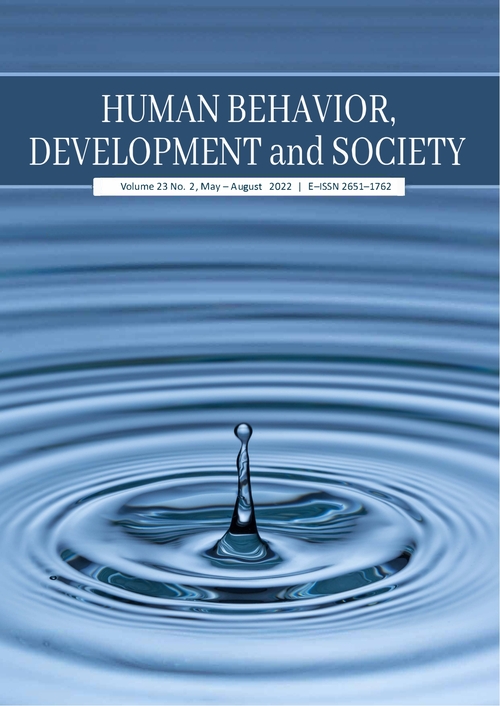Kejaman in Malaysia: Decreasing Language Ability and Uniplexity of Social Networks
Main Article Content
Abstract
This study examined the influence of social networks on the language ability of Kejaman speakers, a small indigenous group in Sarawak, Malaysia. Using questionnaires, data were collected from 123 participants from three generations of Kejaman speakers who lived in two longhouses located in Belaga, Sarawak. The results showed good to excellent ability in Kejaman among the grandparents and parents’ generation, but fewer of the children’s generation were able to interact fluently and spontaneously in Kejaman. Based on frameworks for social network analysis, the Kejaman had a loose-knit social network characterised by a low density and uniplex social network pattern, indicating dependence on a selected number of kin and non-kin contacts. The average number of contacts in their exchange and interactive network was three each for all three generations. The grandparents’ generation was close to having a multiplex social network (49.1%), but the other two generations had uniplex social networks of 21% to 25%. There were significant negative correlations between ability to speak Kejaman and the number of exchange and interactive networks. Their networks comprise contacts from other ethnic groups. Therefore, having more contacts and interactions with non-Kejaman speakers was associated with a lower level of Kejaman ability.
Article Details

This work is licensed under a Creative Commons Attribution-NonCommercial-NoDerivatives 4.0 International License.
Copyright: Asia-Pacific International University reserve exclusive rights to publish, reproduce and distribute the manuscript and all contents therein.
References
Alagappar, P. N., Dealwis, C., & David, K. (2018). The influence of age cohorts and social networks on the language choices of the non-indigenous Tamil minority in Kuching, Sarawak. KEMANUSIAAN: The Asian Journal of Humanities, 25(1), 69–93.
Belaga District Office. (2013). Population in Belaga, Sarawak. Belaga District Office, Sarawak.
David, M. K. (1996). Language shift among the Sindhis of Malaysia [Doctoral dissertation, Fakulti Bahasa dan Linguistik, Universiti Malaya]. Universiti Malaya.
Department of Statistics, Malaysia. (2017). Sarawak population by district 2017. https://data.sarawak.gov.my/home/data/resource/d8336af5-4667-463f-aa61-441edad63d08
Duff, P. (2014). Case study research on language learning and use. Annual Review of Applied Linguistics, 34, 233–255. https://doi.org/10.1017/S0267190514000051
Ghani, B. A. (2000). The influences of sociocultural environment and other languages on the Miriek, Bintulu and Kejaman Languages. In M. Leigh (Eds.), Borneo 2000, (pp. 1–10). Institute of East Asian Studies.
Govindasamy, S., & Nambiar, M. (2003). Social networks: Applicability to minority communities in multilingual settings. International Journal of the Sociology of Language, 161, 25–45. https://doi.org/10.1515/ijsl. 2003.027
Granovetter, M. S. (1973). The strength of weak ties. American Journal of Sociology, 78(6), 1360–1380.
Hawe, P., Webster, C., & Shiell, A. (2004). A glossary of terms for navigating the field of social network analysis. Journal of Epidemiology & Community Health, 58(12), 971–975.
Joan, A. (2013). Language vitality and endangerment of the indigenous minority languages in Sarawak, Malaysia: the case of the Kejaman language. Konferensi Antar Universiti Se Borneo-Kalimantan ke-7, 2013 (KABOKA), Kuching, Sarawak.
Joan, A., & Ekot, J. (2017). The Kejaman language. Universiti Malaysia Sarawak Publisher.
Joan, A., & Ting, S. H. (2017). Influence of social network on language use of Kejaman speakers in Sarawak, Malaysia. Oceanic Linguistics, 56 (1), 22–41.
Karahan, F. (2004). Ethnolinguistic vitality, attitudes, social network and codeswitching: The case of Bosnian-Turks living in Sakarya, Turkey. International Journal of the Sociology of Language, 165, 59–92.
Lanza, E., & Svendsen, B. A. (2007). Tell me who your friends are and I might be able to tell you what language (s) you speak: Social network analysis, multilingualism, and identity. International Journal of Bilingualism, 11(3), 275–300.
Lee, P. Y., Ting, S. H., & Lo, M. C. (2017). Chinese or Malay-medium schools? A study of factors influencing Chinese parents’ choice of primary schools in Sarawak, Malaysia. Kajian Malaysia, 35(1), 41–67.
Lee, D. P. Y., & Ting, S. H. (2016). Tracing ethnic rganized zat of Chinese in Malaysia to Chinese-medium school. Global Chinese, 2(2), 163–187.
Lewis, M. P., & Simons, G. F. (2009). Languages of the world. Ethnologue. https://www.ethnologue.com/size-and-vitality/kag
Li, W. (1994). Three generations, two languages, one family : Language choice and language shift in a Chinese community in Britain. Multilingual Matters.
Mah, B. (2005). Ethnic identity and heritage language ability in second generation Canadians in Toronto [Master's thesis, Ryerson University]. Ryerson University Toronto.
Metom, L., Ting, S. H., & Ling, H. N. (2021, September 8–9). Language use of the Iban people in Iban-Dominant and non-Iban dominant areas in Sarawak. Proceedings of the 3rd International Conference on Language Studies (iCLS2021), Kota Samarahan, Malaysia.
Milardo, R. M. (1988). Families and social networks: An overview of theory and methodology. In R. M. Milardo (Eds.), Families and social networks (pp. 13–47). Sage Publications.
Milroy, L. (1987). Language and social networks. Blackwell.
Sallabank, J. (2010). The role of social networks in endangered language maintenance and revitalization: The case of Guernesiais in the Channel Islands. Anthropological Linguistics, 52(2), 184–205.
Sarhimaa, A. (2009). Social network theory as a framework for studying minor Finnic languages with special reference to Karelian. The Quasquicentennial of the Finno-Ugrian Society, 258, 161–190.
Stoessel, S. (2002). Investigating the role of social networks in language maintenance and shift. International Journal of the Sociology of Language, 153, 93–131.
Strickland, S. S. (1995). Materials for the study of Kejaman-Sekapan oral tradition. Sarawak Museum.
Ting, S. H., & Ling, T. Y. (2012). Language use and sustainability status of indigenous languages in Sarawak, Malaysia. Journal of Multilingual and Multicultural Development, 33(6), 1–17.
Ting, S. H., & Rose, L. (2014). Ethnic language use and ethnic identity for Sarawak indigenous groups in Malaysia . Oceanic Linguistics, 53(1), 92–109.
Ting, S. H., Tinggang, A., & Metom, L. (2021). Language use and attitudes as indicators of subjective vitality: The Iban of Sarawak, Malaysia. Language Documentation and Conservation, 15, 190–218.
Trevilla, L. (2009). Languages of the world. Ethnologue. https://www.ethnologue.com
Velazquez, I. (2013). Mother's social network and family language maintenance. Journal of Multilingual and Multicultural Development, 34(2), 189–202.
Wang, X., & Chong, S. L. (2011). A hierarchical model for language maintenance and language shift: Focus on the Malaysian Chinese community. Journal of Multilingual and Multicultural Development, 32(6), 577–591.


